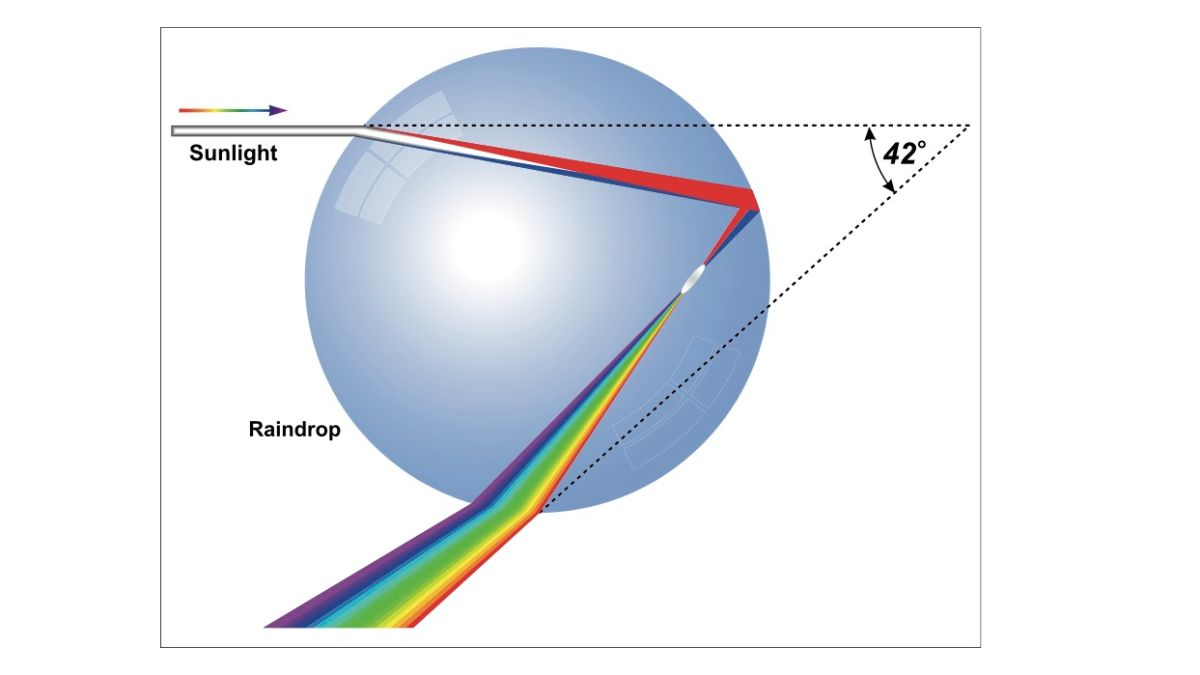Life
Not an arc: scientists explain what shape the rainbow really is
Since childhood, we have all been convinced that the rainbow that appears after rain is shaped like an arc or arch. That's how we drew it in kindergarten and how we see it in nature. Scientists say we were wrong.
According to LiveScience, we have this idea of the rainbow because we see it only partially. In fact, it has the shape of a complete circle formed when sunlight passes through raindrops at a certain angle. But part of this circle blocks the surface of the earth.
Michael Kavulich of the National Center for Atmospheric Research in Boulder, Colorado, said that the visible part of the rainbow depends on where the observer is and how much of the earth's surface is in his field of vision. He also explained how this beautiful natural phenomenon is formed. "Most of the light entering a spherical raindrop ends up refracting at almost the same angle, and since it is also reflected once from the back of the drop, this angle ends up being about 40-42 degrees from the direction the light is coming from," the scientist said.
The effect of light polarisation occurs because water is denser than air. Light continues to travel in this medium until it reaches the back of the droplet. Here it begins to reflect back from the surface. And when it leaves the drop, it is refracted again and divided into colours.
The spherical shape of the droplet also causes the flow of reflected light to form a cone. And the cone ends in a circle. Therefore, if there are no obstacles to the light propagation, the rainbow is a complete circle.
To see this phenomenon, the human eye should be at an angle of about 40 degrees to the light source. For this to happen, the shadow of the observer's head must be exactly opposite the sun, while the sun itself must not be obscured by clouds. In this way, the observer will be inside the rainbow circle, even if they can only see part of it. "Because of this, if you move, the rainbow also moves, always staying in the same place in the sky relative to the sun," Kavulich explained. According to him, the movement of the rainbow can only be seen if you look at it long enough for the sun to change its position. As a rule, rain drops have time to dry during this time.
The scientist also explained why we see the rainbow the way we do - with a spectrum in which we distinguish seven colours. It's all about the wavelengths of light. Kavulich explained that since red light has the longest visible wavelength, it is refracted the least, so it is at the top. Accordingly, violet light is located at the bottom because it has the shortest wavelengths and is most refracted.
But is it possible to see a full round rainbow in natural conditions? There is such a chance if you watch it from an aeroplane window. Also, most of the circle will be visible if you observe the phenomenon from the high floors of a skyscraper or from a mountain.
If you want to experiment to see the true shape of the rainbow, use a garden hose. On a sunny day, direct the water from it to spray and find the correct angle of reflection. You will see a full circle.
Earlier, OBOZREVATEL talked about the scientific theory of how water could have appeared on Earth, which now creates beautiful rainbows after rain.
Subscribe to OBOZREVATEL's Telegram and Viber channels to keep up with the latest news.




























